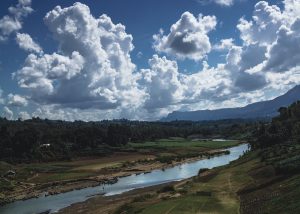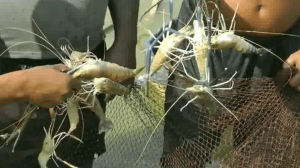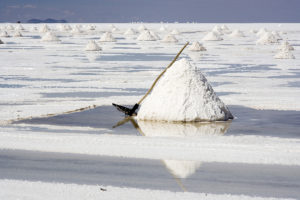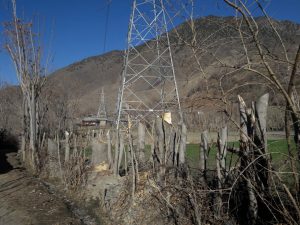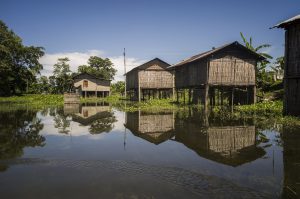Water sharing between countries that share rivers is a huge political challenge. In recent history there have been few cases where such disagreements have led to violence or military action. Still, reaching a satisfactory agreement on water allocation and quality control remains a big challenge for nation states. This is the case for Kazakhstan and China, who share the Ili and Irtysh rivers. New research by the Chinese Academy of Sciences indicates that the water of the Ili river basin is being exploited at an alarming rate, with an exploitation rate of 36.2% and 42.7% for China and Kazakhstan respectively, compared to 40%, the world recognised safe limit of exploitation.
China accounts for the highest proportion of water flowing from abroad into Kazakhstan, equal to about 18% of the country’s total water availability. The Ili river starts in China before flowing into Kazakhstan. Both countries face acute competition over the Ili river, but China has a far larger share of the river’s water resources, with 15.7 billion cubic metres (bcm) per year flowing within its borders, almost double the water that flows through Kazakhstan (8.4 bcm). Hence, both countries have found it difficult to determine how to fairly divide the river quantity between them. China believes it is entitled to appropriate use of the river water that flows within its borders. It also believes this is fair since Kazakhstan has largely exploited the river in the late 1960s, such as with the Kapchagai reservoir.
Like many other industrialising countries, agriculture remains the largest sector of water use in Kazakhstan[1], accounting for 89% of total water withdrawal. In western and central Europe this sector accounts for 58% of water withdrawal. Kazakhstan also has ambitious goals to increase the share of renewable energy generation to 3% of its total energy generation by 2020 and 30% by 2030. With hydro power generation necessary for reaching this goal, the construction of several small-scale hydropower projects is planned for the coming three years in the region of Zhambyl in northern Kazakhstan, the location of Balkhash Lake, one of the largest in Asia. However, developing hydropower poses challenges to managing the limited water availability in this region of Kazakhstan.
In such a situation, Kazakhstan’s political authorities have proactively tackled water scarcity by shifting policy focus. By working closely with international donors, Kazakhstan has reformed its water management, placing an emphasis on the links between large water users in different sectors. It has adopted a ‘Green Economy’ agenda, a new economic policy that is based on the sustainable use of natural resources. By applying policy tools such as food-energy-climate, or water nexus analysis, a mainstream policy tool developed in Western Europe, Kazakhstan has restructured its water management schemes. A new focus has been placed on raising water efficiency. Its foreign policy concept (2014) states that Kazakhstan will ‘continue to improve the legal framework with neighbouring countries on the usage and protection of trans-boundary water resources to enhance water security… [but] its policy focus is water saving’. Similarly in parliamentary hearings officials have stated that “drinking water is one of the main questions at the state level…The question now is to use it efficiently”.[2]
Apart from providing substantial state subsidies to water and agriculture sectors, Kazakhstan’s Green Economy program has also been facilitated by technical support from international donors, including the Asian Development Bank, World Bank, UN organisations such as UNEP, UNECE, as well as the Regional Environment Centre for Central Asia. From 2010 to 2013 UNDP provided about USD 1.5 billion to the Kazakhstan government for water management. The European Union has also been working with Kazakhstan by sharing its experience and policies. It is hoped that advanced extraction technology will be introduced to facilitate efficient use of water resources. An enhanced regulatory framework will also be introduced to reduce water pollution.[3]
With the new water management programme, Kazakhstan has shown enhanced autonomy in securing its water availability.[4] According to the Kazakhstan government’s estimation, it can realise water savings up to 9.1 bcm per year by 2030 from agriculture, industrial, and municipal water use. This significant step will make the country less dependent on water sources from abroad, including China, Russia, Uzbekistan, Russia, and Kyrgyzstan. With the new policy tool, Kazakhstan will reduce water demand by 4.5 bcm per year from all water sourced abroad by 2030.
Another unspoken incentive for Kazakhstan’s shift in water policy may be its intention to reduce potential tensions with China.[5] Kazakhstan has shown flexibility in water negotiations. Although the two countries are involved in ongoing negotiations over water allocation, the emphasis of Sino-Kazakhstan cooperation has been placed on economic and trade relations. Since Kazakhstan hopes to benefit from China’s Silk Road Economic Belt (SREB) strategy,[6] it has shown a commitment to maintaining a strategic partnership with China. For a country that is highly reliant on exports, such as oil and natural gas, Kazakhstan wants to guarantee continued exports as well as expand its transport networks to Europe and other central Asia countries.
Kazakhstan and China’s water sharing experience shows countries have adopted different approaches when faced with water scarcity. Unlike in Western Europe, where countries reached formal river-basin management agreements after decades of negotiation, such as in the case of the Rhine River, industrializing countries have adopted a different path. In such a challenging context, Kazakhstan’s experiences also show that much can be achieved by adopting technological measures and policy improvements.
Nevertheless, the governance of transboundary rivers Ili and Irtysh calls for better collaboration between China and Kazakhstan over issues such as the protection of the Balkash Lake. Concerns have arisen around the diminishing and desertification of Lake Balkhash – a key source of drinking and irrigation water as well as an important fish habitat and ecosystem that relies on the Ili’s waters. Another related issue is how to best to control risks arising from SREB, which aims to link Europe and Asia by constructing inter-state railways and other infrastructure and trade networks. Both China and central Asian countries face the difficult task of reducing the negative ecological effects that such large scale projects may bring.
Lei Xie is a Visiting Research Scholar at Institute of Geographic Sciences and Natural Resources Research, the Chinese Academy of Sciences. Shaofeng Jia is a Professor and Deputy Director of the Center for Water Resources Research at the Chinese Academy of Sciences.
[1] UN water report 2014;
[2] N. Nigmatulin called lack of single water supply operator as a problem, 24 November, 2017; https://strategy2050.kz/en/news/?date=11.2017
[3] Green Economy Concept 2013. Astana.
[4] Ibid.
[5] http://mfa.gov.kz/en/content-view/sotrudnichestvo-mezhdu-rk-i-knr-v-sfere-ispolzovaniya-i-okhrany-vodnykh-resursov
[6] One belt one road brings new life to Central Asia: Kazakhstan in focus, by R. Maitra, Feb 2017, The Schiller Institute.
![<p>The upper delta of the Ili River in Almaty region [image by: Gregory Bedenko]</p>](https://dialogue.earth/content/uploads/2018/02/aerial-view-of-the-ili-river-kazakhstan-3.jpg)


